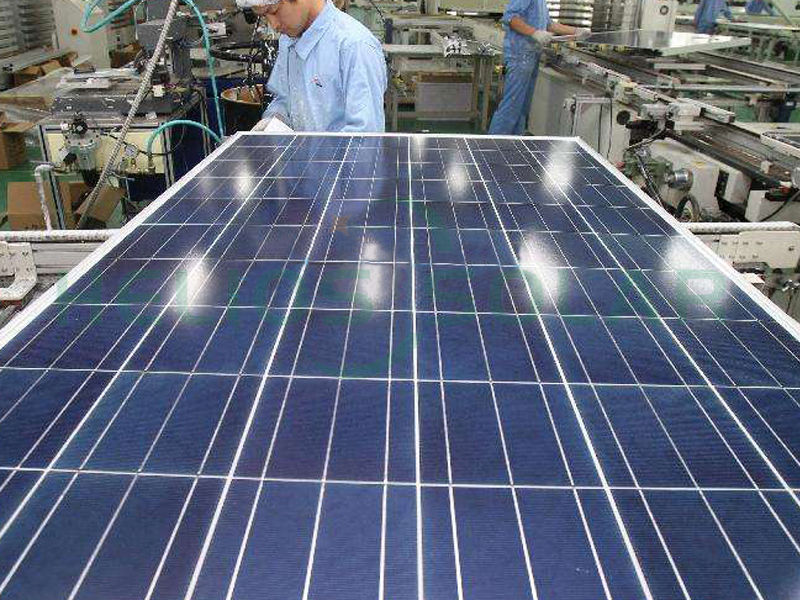As the world increasingly turns to renewable energy sources, solar power has become a leading solution for sustainable energy generation. Among the various types of solar panels on the market, monocrystalline solar panels are highly regarded for their efficiency and longevity. However, as solar technology becomes more prevalent, it becomes imperative for both consumers and installers to verify the type of solar panel they are dealing with. This article explores effective methods for verifying the type of solar panel, with a particular focus on monocrystalline solar panels.
Understanding Monocrystalline Solar Panels
Before diving into the verification methods, it is crucial to understand what monocrystalline solar panels are. These panels are made from a single continuous crystal structure (usually silicon), giving them a uniform appearance and high efficiency. Monocrystalline panels are known for their smooth black color and rounded edges, making them aesthetically pleasing in residential and commercial installations. They generally offer higher efficiencies, often exceeding 20%, and have a longer lifespan compared to polycrystalline panels.
Why Validation Is Important
Verifying the type of solar panels is crucial for the following reasons:
1. Performance Expectations:
Different types of solar panels have different efficiency and performance characteristics. Understanding the types can help you set realistic expectations for energy production.
2. Warranty and Lifespan:
Monocrystalline solar panels generally have a long warranty and lifespan. Verification ensures that consumers receive the benefits associated with their purchase.
3. Cost Considerations:
Monocrystalline solar panels are generally more expensive than other types of solar panels. Understanding solar panel types can help you make smart financial decisions.
4. Installation Requirements:
Different types of solar panels may have specific installation requirements. Verification helps ensure that the installation process is carried out correctly.
Method to verify solar panel type
1. Visual Inspection
One of the easiest ways to verify the type of solar panel is through visual inspection. Monocrystalline solar panels have unique characteristics:
Color and Appearance: They typically have a uniform deep black color and rounded edges. In contrast, polysilicon panels are often bluish and have a mottled appearance.
Cell Structure: Monocrystalline panels have cells cut from a single crystal, so they have a more uniform appearance. If you observe a more diverse texture and color, it may indicate that this is a multicrystalline panel.
2. Check the Specifications
Another effective method is to check the specifications provided by the manufacturer. Most reputable manufacturers will provide detailed information about their products, including the type of solar panel. Look for:
Efficiency Rating: Monocrystalline solar panels typically have high efficiency ratings (above 20%). If the efficiency of a solar panel is significantly lower, it is probably not monocrystalline.
Power Output: Monocrystalline panels generally have higher power output than polycrystalline panels of the same size. Checking the power rating will help determine the type.
3. Manufacturer Label
Most solar panels come with a label that provides basic information, including the manufacturer, model number, and solar cell type. This label is usually located on the back of the panel. By finding this label, you can easily identify whether the panel is monocrystalline or another type.
4. Performance Testing
If you have access to a solar panel system, performance testing can be a reliable way to verify the type. Monocrystalline panels tend to perform better in low light conditions than polycrystalline panels. You can perform performance testing by measuring the output of a solar panel under various light conditions. If the panel consistently produces a higher energy output, it may indicate that it is monocrystalline.
5. Consult Professionals
If you’re still unsure about the type of solar panels you have, consult with a solar professional. Installers and technicians are often familiar with the characteristics of different types of solar panels and can help identify problematic panels. They can also provide insight into panel performance and efficiency based on their own experience.
6. Research and Literature
Finally, researching specific models of solar panels can yield valuable information. Many manufacturers have online resources that detail their products, including the types of solar cells used. Additionally, user manuals and installation guides often contain specifications that can help identify the type of panel.
In conclusion
Verifying the type of solar panel, especially monocrystalline solar panels, is critical to ensuring optimal performance, longevity, and value. By employing methods such as visual inspection, checking specifications, examining manufacturer labels, conducting performance tests, consulting professionals, and studying documentation, consumers can confidently identify the type of solar panel they are dealing with. As the solar industry continues to evolve, understanding the technology behind solar panels will enable consumers to make better decisions for their energy needs.
Post time: Nov-20-2024


